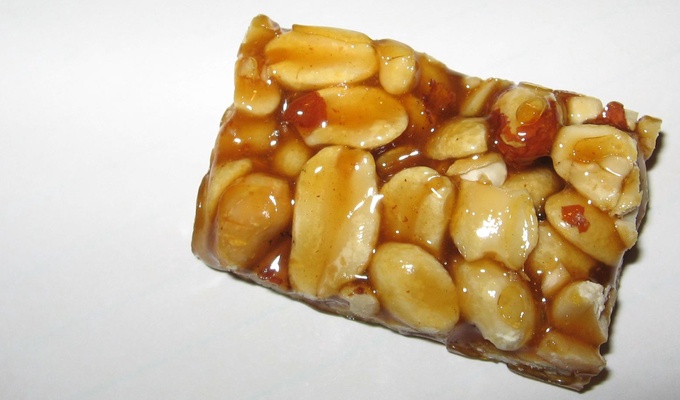'Pé-de-Moleque' is a traditional candy from Brazil. It is made of peanuts and rapadura or molasses. The candy is prepared by mixing roasted, peeled peanuts with melted brown sugar, with or without the addition of macerated peanuts as well. The mixture is gently stirred over low heat until it gets close to crystallizing. Then the mixture is placed on a plain stone or metal surface in pieces similar in size to cookies. This traditional preparation results in soft, irregularly-shaped sweets of a dark brown color. Softness results from the incorporation of peanut oil.
Pé-de-Moleque appeared in the middle of the 16th century, with the arrival of sugar cane in Brazil. The city of Piranguinho, in the south of the state of Minas Gerais, is known for the artisanal production of sweets, and has stood out on the national scene through the party of the biggest pé-de-moleque in the world, which is part of the municipality's cultural calendar of festivities.
In India, mainly in the states of Gujarat and Maharashtra, they call it chikki. In Portugal, the pé-de-moleque is known as nougat. In Mexico, it's called palanqueta.
There is a derivation of the candy in the version of a cake, common to festa juninas from places in Brazilian Northeast. Pé-de-moleque cake is also called "bolo preto" (black cake), in which cashew can replace peanuts, rapadura is kept and fermented cassava mass (pubada, puba mass) and other ingredients.
